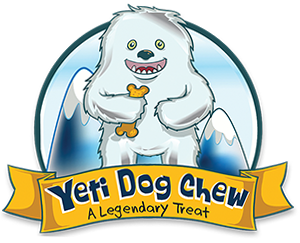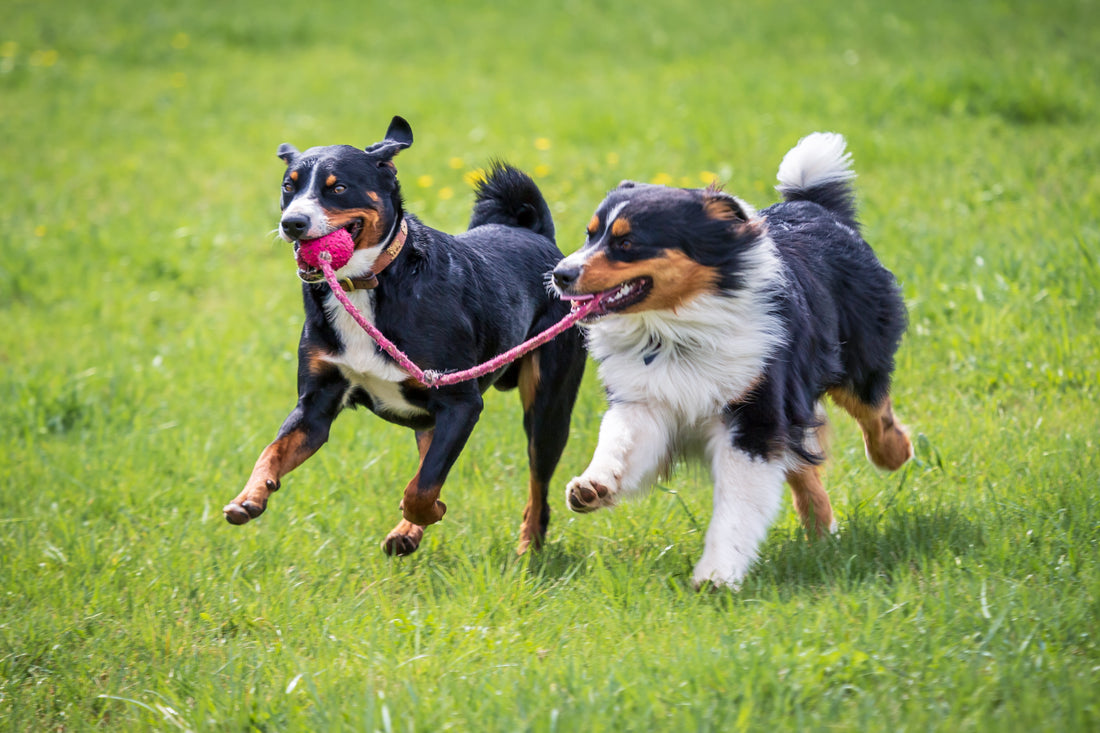Just like people, dogs have unique personalities and those traits shine brightest during playtime. Whether your pup is the class clown or the stealthy hunter, recognizing your dog’s play style helps you provide the right enrichment, prevent conflict at the dog park, and build a stronger bond.
Here’s a breakdown of the most common dog play styles, and how to support each one:
The Wrestler
Play style: Body slams, paw swipes, chest bumps, and gentle tackling.
Traits: Confident, physical, and social.
Best for: Play sessions with similarly sized dogs who also enjoy roughhousing.
Watch for: Overexcitement or pairing with dogs who find this style overwhelming.
Try this at home: Tug toys or supervised playdates with compatible canine friends.
The Chase Fanatic
Play style: Sprinting, dodging, and chasing (or being chased).
Traits: Agile, alert, and fast on their feet.
Best for: Open areas like fenced-in yards or parks.
Watch for: Escalation into nipping or frustration when the game ends.
Try this at home: A flirt pole, long lead in a field, or a dog-safe agility course.
The Fetcher
Play style: All about the toy; throw it, and they’re gone.
Traits: Focused, toy-motivated, and energetic.
Best for: Solo play or structured games with people.
Watch for: Obsessive behavior or resource guarding.
Try this at home: A game of fetch with a soft ball or toy, or puzzle toys with hidden treats.
The Stalker or Hunter
Play style: Slow movements, crouching, and sudden pounces.
Traits: Instinctual, precise, and quiet.
Best for: Games that simulate hunting and scent work.
Watch for: Misunderstood signals by other dogs, some may see stalking as threatening.
Try this at home: Hide-and-seek, snuffle mats, or a treat-dispensing toy that mimics prey.
The Mouthy Player
Play style: Gentle nipping, jaw sparring, and “talking” with vocal play growls.
Traits: Social, tactile, and communicative.
Best for: Dogs who enjoy the same play language.
Watch for: Overstimulation or playing with dogs who don’t like mouth contact.
Try this at home: Durable chew toys or enrichment toys that can be licked or nudged.
The Observer
Play style: Watches from the sidelines or interacts minimally.
Traits: Reserved, thoughtful, and selective.
Best for: Calm environments with one-on-one interaction.
Watch for: Social pressure or mislabeling them as unfriendly, they might just be shy or choosy.
Try this at home: Sniff-based games, solo play activities, or gentle encouragement with a trusted companion.
Recognizing how your dog prefers to play is essential for their well-being and your relationship. It helps avoid miscommunications with other dogs, preventing potential injuries or stress during social play. Understanding their play style also guides you in choosing the right toys and enrichment activities that truly engage them. Most importantly, it strengthens your bond by allowing you to share in activities that feel natural and enjoyable for your dog.
Final Thought: Whether your dog is a wild chaser or a patient puzzle-solver, every play style is valid and worth celebrating. Lean into your pup’s preferences and watch how much more fun (and peaceful) your days together can become.
Email or tag us on your thoughts! As well as photos and comments to hello@yeti.pet or Tag us on social media.
Follow us on social media!
Subscribe to our emails to stay connected and learn about our exclusive saving offers.

